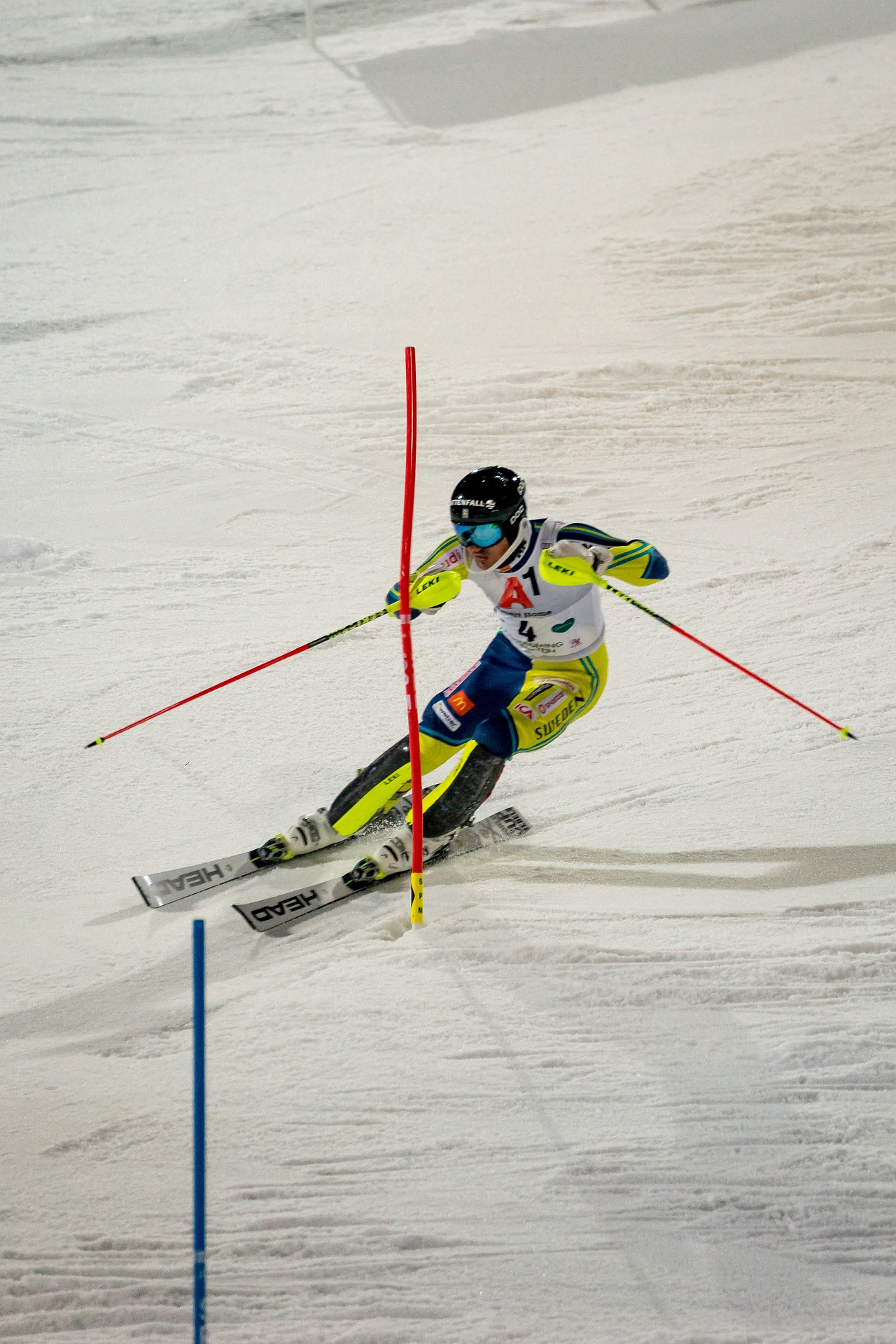A racer I’m working with recently won the first run of a big race, but he struggled in his second run and missed out on a potential victory. His race day reminded me of a similar experience in my first college carnival as a freshman at Middlebury. I won the first run of the UVM carnival and was so freaked out with my lead (I didn’t win many races back in the day, so it was a new thing for me!) that I was so nervous and distracted that I skied my second run cautiously (never works!) and ended up 6th. My client’s experience got me thinking about how I might help other racers who have a fast first run (you don’t have to have won the first run) and want to have an equally good second run.
 One of the biggest challenges racers face in slalom and GS is putting together two fast runs. Unless, of course, your name is Marco Odermatt or Mikaela Shiffrin! Most commonly, particularly below the World Cup and especially in the junior ranks, racers will have a great first run but then screw up the second.
One of the biggest challenges racers face in slalom and GS is putting together two fast runs. Unless, of course, your name is Marco Odermatt or Mikaela Shiffrin! Most commonly, particularly below the World Cup and especially in the junior ranks, racers will have a great first run but then screw up the second.
The $64,000 question you may be asking is: “Why does this happen to me?” It all comes down to what changes mentally from run to run.
Let’s start with what enables you to have a fast race run. There is variation between racers in how they approach race runs mentally (e.g., some like to be chill while others want to be fired up, some like to be super focused before their race runs, while others like to distract themselves until just before they leave the gate). At the same time, I have found most of the best racers in the world share common attitudes that free them to ski with confidence and abandon and without fear, worry, or doubt:
- Trust that their body will do what they trained it to do without the need for much thinking.
- Focus on the process and present.
- Positive attitude (“You got this!”).
- See the race run as a challenge to pursue.
- “Bring it” mindset.
I have also found common attitudes and mental approaches that are a “kiss of death” for ski racers:
- A preoccupation with results.
- Comparison with others.
- Outcome expectations.
- Negative attitude.
- Fear of failure.
- Threat reaction.
- Pre-race anxiety (because of all the above).
Now let’s connect these two very different mental approaches to how you ski on your first and second race runs. If you had a fast first run, you probably had the first cognitive approach I described above. In a nutshell, this mindset frees your body to do what you’ve trained it to do. It also minimizes the difference between a training run and a race run because, though race runs matter more, this mental approach prevents you from getting bogged down in those differences (e.g., results, points, rankings, beating other competitors). Instead, you can focus on just skiing as fast as you can.
In an ideal world, you tell yourself, “I just had a great first run, so I should repeat everything I did for my second run.” Unfortunately, many racers work against themselves without intending to do so. They change their approach against their best interest. I am sure you agree that’s plain dumb! If something is working, you should keep doing it. But after that first run, here is where your skiing may go south.
racers work against themselves without intending to do so. They change their approach against their best interest. I am sure you agree that’s plain dumb! If something is working, you should keep doing it. But after that first run, here is where your skiing may go south.
Again, in an ideal world, your first thought after a fast first run should be: “I’m skiing fast, so let’s do it again!” Unfortunately, a more common first thought after a fast first run is: “OMG, what if I blow my second run and miss out on this great opportunity!” With that thought (or some variation thereof), your thoughts, emotions, and physiology turn against you and guarantee a poor second run.
You perceive the second run as a threat rather than a challenge. You worry about whether you can have another good run—your focus shifts from skiing fast to not skiing slow. Your overall attitude is one of protecting your first run rather than ripping your second run. You feel fear and trepidation instead of excitement and opportunity. Your body gets anxious and tense. These reactions either cause you to ski cautiously to protect that fast first run (this never works!), or you’re so tight physically and unfocused mentally that you make a mistake after mistake and either DNF or barely make it to the finish line.
Ironically, with this “bad” attitude, you increase your chances of having a slow second run, the thing you fear the most. That doesn’t make sense. But nothing is rational or logical when it comes to a second run after a fast first run.
The next $64,000 question is:” Okay, I now understand what happens to me mentally and physically. So, what can I do about it?”
In my first bulleted list above, I’ve already shown you what attitudes and mental approaches you need to embrace to have a fast second run after a fast first run. But, as every racer knows, that’s easier said than done.
Making this mental shift that will allow for fast second runs starts with an awareness of what you’re doing bad (see second bulleted list above) and recognizing that it just doesn’t help you ski fast on your second runs.
The next step is to realize what worked in your first run that enabled you to go fast and to repeat it rather than going down the “bad road” on your second run (again, see the first bulleted list).
Then, because most racers have a natural tendency to go down that bad road, you must make a conscious commitment between runs to take the “good road.” Taking the good road involves doing what will set you up for an equally fast second run. At the same time, you need to recognize that “S&%# happens” in ski racing (e.g., catch an edge, hip out, get hit with a gust of wind, hook a tip). So, even your best efforts at a good second run aren’t always rewarded. Here are a few practical things you probably did on your first run that you should repeat on your second run:
- Avoid looking at Live-Timing.
- Focus on your race routine to ensure maximum physical and mental preparation.
- Distract yourself by talking to your friends and/or listening to music.
- Lots of imagery of skiing fast for your second run.
- Lots of deep breathing.
- One goal on your second run: Bring it!
In reality, getting off the bad road of disappointing second runs won’t be easy or immediate. And you can’t just decide on race day to take the good road. Having the right attitudes and mental approaches begins in training. It also involves ensuring that your race-day routine supports the good road (e.g., again, don’t look at Live-Timing between runs!).
However, with many repetitions of taking the good road, you ingrain those attitudes, mental approaches, and habits that encourage fast skiing, so, on race day, you take the good road on both of your race runs and, if the almighty ski-racing gods are looking kindly on you that day, then you set yourself up to ski fast on both runs. With many repetitions in taking the good road, the bad road becomes overgrown from a lack of use until there is only one road to take—the good road!—and you can give it your all every time you slide into the starting gate. And the likely, though not guaranteed, is getting the results you want and achieving your race-day goals.






